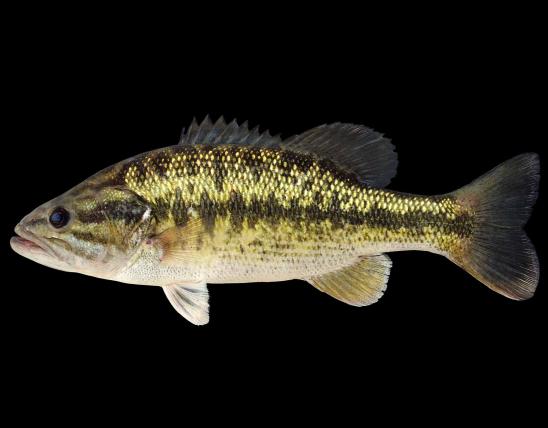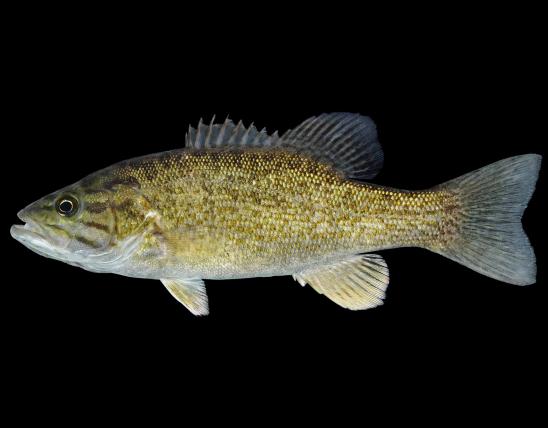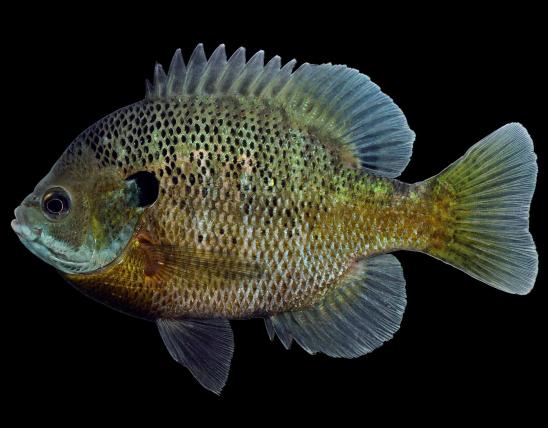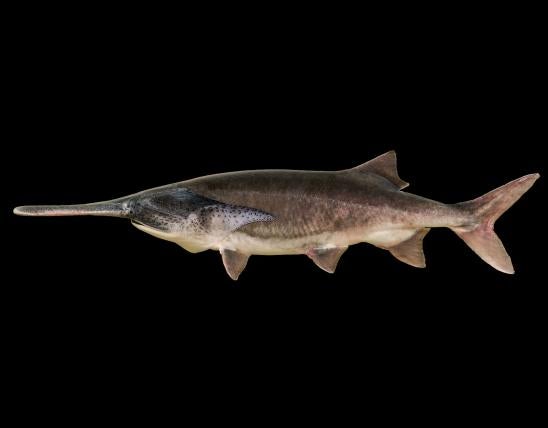Annual Prospects Report
Fishing for black bass should be excellent in 2024. Largemouth bass are plentiful throughout the lake as a result of the high lake levels over the past several years. An abundant year class of largemouth bass was produced in 2020 and these fish should reach the minimum length limit of 15” by spring 2024. Quality largemouth bass are present in the lake as well. The percentage of largemouth bass greater than or equal to 15” was 28% throughout the reservoir during the spring 2023 electrofishing surveys. These surveys also revealed an abundance of spotted/Kentucky bass in the 11”-14” range, with nine percent of the spotted bass captured in the spring surveys exceeding the minimum length limit of 15”. Smallmouth bass fishing should be good again in 2024 with good numbers of keeper size fish available. Largemouth and spotted bass comprise the majority of the black bass population in the river arms, while smallmouth bass comprise a substantial segment of the black bass population in the main lake from the Highway 86 bridge to Campbell Point. Anglers need to fish a variety of water depths and types to find bass. Outside of the spring spawning period and in the fall, bass are often found in deeper, offshore water. Extended main lake points, humps, and bluffs are productive areas. Jigs, spoons, and drop-shot rigs are effective during summer months in the 10-25 foot range or deeper, depending upon the depth of the thermocline. Largemouth and smallmouth bass can typically be caught fishing on the bottom while spotted bass are commonly found suspended over deep water following schools of baitfish. Good electronics can greatly increase your chances of finding suspended schools of spotted bass.
Crappie fishing should be good in 2024. Fall 2022 netting surveys in the James River Arm revealed a large year class of age two black crappie in the 7”-9” range and many of these fish were over 11” in fall 2023. Crappie typically reach the legal-size limit of 10” in 2.5 years. Another large year class of age one black crappie in the 4”-6” range was observed in the fall 2023 netting surveys indicating the crappie fishing should be good for several years to come. A fair number of legal sized black crappie are present in the lake but anglers should expect to catch above average numbers of sublegal fish in 2024. Fifty-two percent of the black crappie captured in 2022 netting surveys were greater than 8” and 11% were greater than 10”. White crappie are not as abundant as black crappie in the lake, but comprise a higher percentage of larger fish. Seventy-six percent of white crappie captured in 2022 netting surveys were greater than 8”, 50% were greater than 10”, and 19% were greater than 12”. Crappie fishing will be best in the James, Kings, and Long Creek arms where densities of fish are higher. The best crappie fishing will be in the spring and fall during which small plastic jigs and minnows are very effective for catching crappie around woody structure and the numerous brushpiles throughout the lake. Crappie fishing is also fair during the winter months and they can be caught fishing around deeper brush piles and under docks that extend over deep water.
White bass fishing will be fair in 2024. The best opportunity to catch white bass will be when the fish congregate far up in tributary streams to spawn in March. Anglers willing to troll or fish jigging spoons can also catch white bass during the summer months. Gravel flats 25’ to 50’ deep are the best areas to troll or spoon for white bass. Trolling can also be effective in February and early March when these fish begin to move up the river arms. As water temperatures warm, the white bass will move further up the river into shallower water, but will congregate in deeper holes in the channel up the river arms of the lake before moving up. Quality sized white bass are present with fish commonly exceeding 15”.
Walleye fishing should be excellent in 2024. Areas around the dam, and the upper reaches of the Kings River Arm, the James River Arm, and the upper White River Arm can all provide good spring walleye fishing. Walleye typically move up the river arms to spawn around the first part of March and are often caught in the same areas as spawning white bass. However, recent studies indicate that many walleye migrate back to the main portions of the lake in the summer months and can be caught fishing or trolling near deep points and channel swings during this time. Electrofishing surveys were conducted in the James River, Kings River, and Upper White River in March 2023 and showed good populations of walleye in each area. In these areas combined, 97% of walleye were greater than 15”, 34% were greater than 20”, and 2% were greater than 25”. Spawning conditions were ideal for walleye in the springs of 2019, 2020, 2021, and 2023 resulting in good natural reproduction throughout the lake and good numbers of walleye were caught by anglers throughout the lake in 2023. The Missouri Department of Conservation stocked surplus walleye in the James River Arm in 2020, 2021, and 2023 which will greatly supplement this fishery.
For experienced bluegill anglers, Table Rock Lake can provide quality fishing. Good numbers of quality sized fish in the 7"- 9" range exist. The best time to catch bluegill is late May through early July. Look for gravel areas, points, and pockets in 10-20 feet of water. Fish on the bottom with live crickets or worms with light tackle. Redear Sunfish are also present, especially in the James River and Upper White River Arms. In spring 2023 electrofishing surveys, 57% of the redear sunfish captured were greater than 9” and 14% were greater than 11”. Goggle-eye are present in good numbers and can also reach large sizes (greater than 10”) in Table Rock Lake. They can often be caught in the same areas as smallmouth bass around larger rock structures. Brush piles in the main lake areas also congregate good numbers of goggle-eye.
Both channel and flathead catfish are present in the lake in good numbers. Channel catfish are more prevalent in the river arms, while flathead catfish are more common in the clearer sections of the main lake. Electrofishing surveys for flathead catfish in spring 2023 revealed a fair number of fish present with numerous fish over 25”. Flathead catfish are typically caught near woody structure such as standing timber and brushpiles. Both prepared and live baits are effective when using setlines, jug lines, or rod and reel, especially in late spring and early summer.
Snagging for paddlefish should be excellent in 2024. Numerous legal-size paddlefish were observed in netting surveys in March 2023. Ninety-one percent of the paddlefish collected during the 2023 surveys were greater than the minimum length limit of 34” and 28% were greater than 41". These fish ranged from 20 to 60 pounds with a few fish exceeding 80 pounds. Paddlefish concentrate each spring in the upper reaches of the James River Arm above Cape Fair. Early in the snagging season, most paddlefish are caught between Virgin Bluff and Point 15. As water temperatures warm, the paddlefish will move farther up the James River Arm. If the James River rises enough to stimulate a spawning run, paddlefish will migrate upstream to spawn. The extent and duration of these migrations are dependent upon river flows and water temperatures but can extend as far upstream as Lake Springfield Dam. A smaller number of paddlefish make spawning runs up the White River Arm each spring and can be caught from Eagle Rock to the Missouri/Arkansas border. Note that snagging for paddlefish is not legal in Arkansas from the Missouri/Arkansas border to 100 feet below Beaver Lake Dam. Recent studies also showed that paddlefish run up the Kings River Arm in the spring as well. Paddlefish can be legally harvested in Missouri from March 15 through April 30 and the limit is two paddlefish per day. Because paddlefish feed on zooplankton, the best way to catch them is by snagging them with large treble hooks. Look for schools of paddlefish in the lake channel using a depth finder and cast to them or troll over the school with a boat while snagging. A project to help determine the number of paddlefish harvested each year began in 2015. Many paddlefish have been tagged with metal jaw bands and anglers are encouraged to report tagged paddlefish they catch to the Missouri Department of Conservation.
A large-scale fish habitat project was conducted in Table Rock Lake from 2007-2013 wherein over 1,400 fish habitat structures were placed in the lake. A project funded by Bass Pro Shops began in November 2023 to replenish 645 of the brushpile structures in the lake. Anglers can find the locations of these structures on the Missouri Department of Conservation’s website at: https://mdc.mo.gov/fishing/where-fish. Anglers can also download the free MO Fishing App to find the locations of these habitat structures using a cell phone.



























